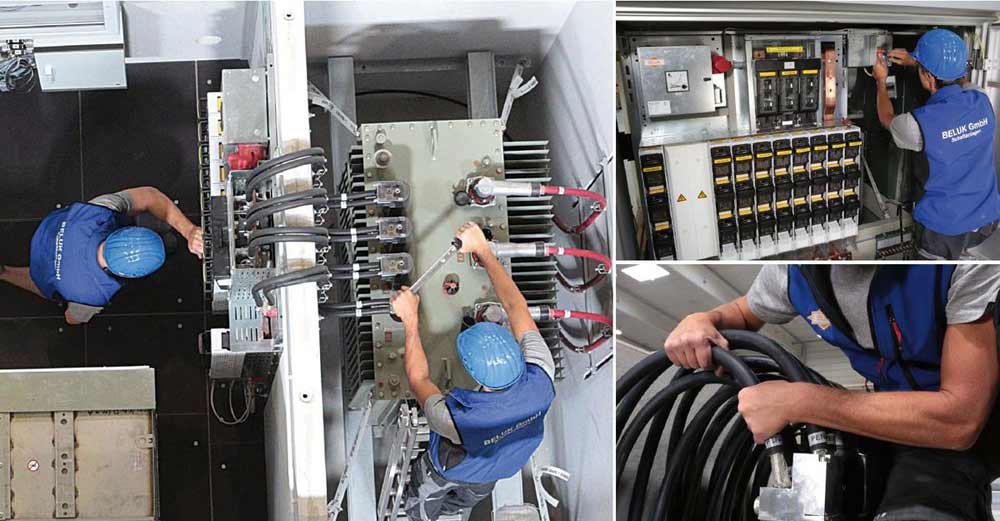When you walk through a high-performance automotive factory, everything feels like a choreography of precision: robotic arms welding body frames, conveyor belts moving in perfect rhythm, and hundreds of engineers and technicians working in sync. But behind this performance lies something even more crucial: safety.
At one of Germany’s most iconic car manufacturers, safety inspections were once paper-based, slow, and difficult to track. That system has since been replaced with flowdit, a mobile-first solution that’s brought clarity, speed, and accountability to workplace safety and fire protection inspections.
Inspections Were Getting Done – but the Process Was Holding the Team Back
For years, safety officers at the manufacturer’s plants used printed checklists to conduct routine workplace safety and fire protection walks. The intention was never in doubt: the teams were thorough and knew the stakes. But the workflow itself had become a problem. Notes were taken by hand, photos captured on phones, and everything was later typed into Excel files or PDF reports, sometimes days after the inspection actually happened.
The documentation was fragmented, and coordination between departments was uneven. Important findings were flagged, but sometimes lost in the shuffle. One safety manager described the follow-up process as a guessing game: “You’d find a serious issue, assign it to someone via email, and hope it got fixed. But unless you remembered to check, you never really knew.”
As different plants developed their own versions of checklists, inconsistencies crept in. Reporting varied from one site to the next. Data wasn’t centralized. Audits became last-minute sprints. More than once, teams had to re-walk facilities just to validate if an issue had been addressed or not. Even something as simple as matching photos to specific findings became a time sink.
Everyone was working hard, but the tools weren’t keeping up.

Finding a Better Way to Track What Matters
The tipping point came when a regional safety lead began searching for a digital solution that would unify the inspection process. They weren’t looking for something flashy; just a tool that was simple to use, flexible enough to adapt to different facilities, and powerful enough to provide real-time visibility across locations.
After comparing several platforms, the team found flowdit. It wasn’t just another checklist app. What stood out was the balance between simplicity and depth, the ability to build inspection templates in minutes while still capturing detailed evidence, assigning tasks, and tracking everything in one place.
“We didn’t want to change how our people think,” the safety lead explained. “We just wanted a system that worked the way they already do – but better.”
Turning Paper Checklists into Real-Time Workflows
The rollout started with a pilot project in fire protection. Inspections that used to rely on printed forms were converted into interactive digital templates. Safety officers used flowdit on tablets during walkthroughs, documenting findings as they happened, including full-resolution photos and notes linked to specific locations.
The app automatically logged timestamps, user data, and corrective actions. There was no need to copy anything by hand or upload files later. Issues were visible to the right managers immediately, without the need for follow-up emails or manual report assembly.
Within weeks, what used to be fragmented became integrated. Each site used the same structure, yet could still customize fields for local requirements. Flowdit’s offline mode even made it possible to document inspections in low-connectivity areas and sync later, something paper could never do.
What surprised many on the team was how fast adoption happened. Even long-time employees who were skeptical of change appreciated how the app removed friction from their daily routines. “It’s not just that the app is easier,” said one inspector. “It’s that I don’t have to remember what I forgot. It’s all there.”

From Reactive Reports to Proactive Safety Culture
As more sites came onboard, the benefits became impossible to ignore. Inspections were completed faster. Findings were clearer. Follow-ups were tracked, not hoped for. And perhaps most importantly, leadership began to see safety not just as a set of procedure, but as a system that generated data and insight.
With all inspections digitized, safety managers could see patterns that had once been buried in folders. Recurring issues in specific zones. Gaps in PPE compliance. Fire extinguisher checks that had been missed. They could spot these early and intervene before risks escalated.
The impact extended beyond internal teams. When external auditors requested documentation, the safety team no longer had to assemble evidence manually. Reports were clean, consistent, and professional. This saved time, but also boosted confidence in the company’s safety culture.
“We didn’t set out to impress anyone,” the quality manager shared. “But when a customer or auditor sees how structured and transparent our inspections are now, it sends a strong message.”
Scaling Success Without Adding Complexity
Today, flowdit is being used at multiple production facilities across the country. While it began as a tool for fire protection and workplace safety, other departments, from facility management to logistics, have taken notice. The system’s modular structure makes it easy to apply in different contexts, whether for pre-maintenance checks or daily compliance rounds.
One of the biggest wins? The ability to create and deploy new inspection templates in-house, without needing IT or third-party support. This has allowed the safety team to stay agile, adapt to regulation changes, and launch improvements in hours, not weeks.
Most importantly, the technology has shifted how people think about inspections. What once felt like a chore is now part of a collaborative process: one that’s visible, supported, and built for action.
What’s Next
For this leading automotive manufacturer, safety has always been a core value. With flowdit, they’ve found a way to operationalize that value across teams, departments, and locations — without adding complexity. The result is a faster, smarter, and more transparent way to keep people safe and systems running.
As the company looks ahead to greater integration of ESG standards and real-time reporting, digital tools like flowdit will continue to play a key role: helping transform health and safety from a checkbox activity into a strategic advantage.
Want to simplify safety inspections like a German Car Manufacturer




